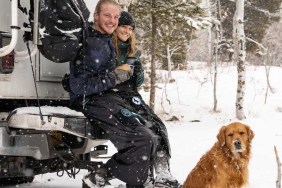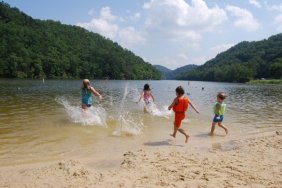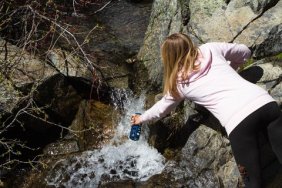 When it comes to wilderness survival tips and guides, there is a plethora of information out there for outdoors enthusiasts to tap into. However, many overlook the fact that much of the information available is actually incorrect. In some instances, misinformation is harmless, but in the outdoors, knowing what’s true and what’s false can mean the difference between life and death. Today we’ll take a look at three of the more common wilderness myths, as well as their factual counterparts.
When it comes to wilderness survival tips and guides, there is a plethora of information out there for outdoors enthusiasts to tap into. However, many overlook the fact that much of the information available is actually incorrect. In some instances, misinformation is harmless, but in the outdoors, knowing what’s true and what’s false can mean the difference between life and death. Today we’ll take a look at three of the more common wilderness myths, as well as their factual counterparts.
Water in nature is safe to drink, so long as it’s running.
This is one of my favorites. I think this myth can be attributed to movies and television. Hikers and campers who drink water just because it’s flowing run the risk of making themselves very sick. However, you can absolutely drink it once it’s purified. Boil the water, filter it, or use iodine or tablets, and you’ll kill off germs and make it safe to drink.
To start a fire, simply rub two sticks together.
This seems to be one of those outdoor myths that just won’t die. We can’t fault newcomers for believing it, though; more often than not, when a fictional character gets into trouble out in the woods, this is their means of starting a roaring fire. In reality, though, it takes much more than two sticks. You can use branches in combination with a flat piece of wood that has a groove cut into it, or even rocks to start a fire, but it’s better to be prepared for an emergency where you’ll need to start a fire by having weatherproof matches or a lighter on hand, along with some tinder.
Get to high ground to keep warm.
Many people think that in the outdoors, seeking higher elevations will lead to warmer surroundings. While heading to higher ground is essential if you’re facing rising flood waters, if you need to stay warm and you’re in a dry area, it’s best to lie low and stay where you are. In this instance, the wind will be your main concern. At higher altitudes, you’re less protected from the wind, whereas valleys and low lands are protected from the harsh gusts. Seeking shelter in low areas with windblocks will go a long way towards keeping you warm.
I’m sure some of you read the myths listed above and realized you believed one or two of them, maybe even all of them. Don’t blame yourself, though; like I said, movies and television do a great job of convincing us of the truth of many outdoor myths, so the line between true and false can blur. Keep the tips I’ve mentioned alongside each myth in mind and you’ll have no trouble avoiding today’s pitfalls.








